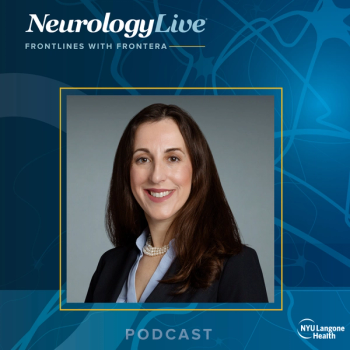
From Neurology Enthusiast to Advocate for Health Equity: Moira Kapral’s SEQUINS Hall of Fame Journey

Moira Kapral, MD, MSc, reflects on her SEQUINS Hall of Fame recognition, the evolution of brain health equity, and her work addressing disparities in stroke care.
The
The SEQUINS Hall of Fame, established in 2025, honors individuals who have significantly contributed to advancing equity in neuroscience. Inductees, which will be celebrated at the upcoming
To celebrate the 2025 inductees, NeurologyLive reached out to this year's SEQUINS Hall of Fame members to learn more about the significance of their recognition, the presentations they’ll deliver at the upcoming meeting, their professional journeys, and how the field of brain health equity in neuroscience has evolved. Among the distinguished honorees is Dr. Moira Kapral, MD, MSc, Professor of Medicine and Director of the Division of General Internal Medicine at the University of Toronto. Her research focuses on understanding and addressing disparities in stroke care, with a particular emphasis on sociodemographic factors such as age, sex, and socioeconomic status.
NeurologyLive: What does it mean to be named a 2025 SEQUINS Hall of Famer?
Moira Kapral, MD, MSc: I am incredibly honored to be included in this group. And it feels particularly meaningful that this recognition is occurring at this time in history when many feel that they cannot speak openly about inequities.
What inspired you to pursue a career in neurology, and how has your perspective on the field evolved over the years?
My interest in neuroscience dates back to my undergraduate days, when one of my professors gave me a special issue of Scientific American magazine that focused on the brain. I was fascinated by the mapping of lesions to corresponding neurological deficits. This was followed by medical school, where I was inspired by lectures given by stroke neurologists Drs. Frank Silver and Sandra Black. At that time, there were few treatments available for stroke, and I was a resident when the landmark trials were published related to carotid endarterectomy, thrombolysis, and warfarin for stroke prevention in atrial fibrillation, and witnessed the development and implementation of organized systems of stroke care delivery. It's been incredible to see the advances in stroke treatment over the years.
What went into the topic you choose to present? Give some background on what you plan to present.
My early research focused on developing and measuring quality indicators for stroke care, with the goal of determining whether evidence-based therapies were being adopted into clinical practice. However, I soon realized that looking at overall quality of care could miss important differences in care and outcomes based on sociodemographic factors. I am an attending physician on the inpatient general internal medicine clinical teaching units, where I often observe how people's health care trajectories vary depending on things like age, sex, socioeconomic status, language fluency, mental health, and other factors. I brought these clinical observations to my research, and aimed to document, quantify, and understand the reasons behind disparities in care and outcomes. Although much of this work is descriptive, there is power in having data and numbers to show where and to what extent inequities exist. I plan to present some of this work.
Who have been your most significant mentors or influences in your career, and how did they shape your path in neurology?
I have been fortunate to have had many outstanding mentors. Drs. Frank Silver and Sandra Black, who inspired my love of neurology and who have been supportive in so many ways throughout my career. Drs. Tony Hakim, Jack Tu, and Andreas Laupacis, who gave me the opportunity, early in my career, to co-lead the Ontario Stroke Registry. Dr. Vladimir Hachinski, who provided advice and opportunities. Dr. Don Redelmeier, my thesis supervisor, who taught me everything from designing a research question to writing a manuscript to giving a presentation, and who remains my advisor to this day.
How have you seen brain health equity neuroscience change during your career, and what work remains to be done?
When I started my career, there was almost no discussion of brain health equity. This was followed by important studies documenting variations in neurological care and outcomes based on sex, gender, race, ethnicity, and other sociodemographic factors. Now we are at a stage where we can build on this work by understanding why these occur and how we might address them.
Newsletter
Keep your finger on the pulse of neurology—subscribe to NeurologyLive for expert interviews, new data, and breakthrough treatment updates.




















